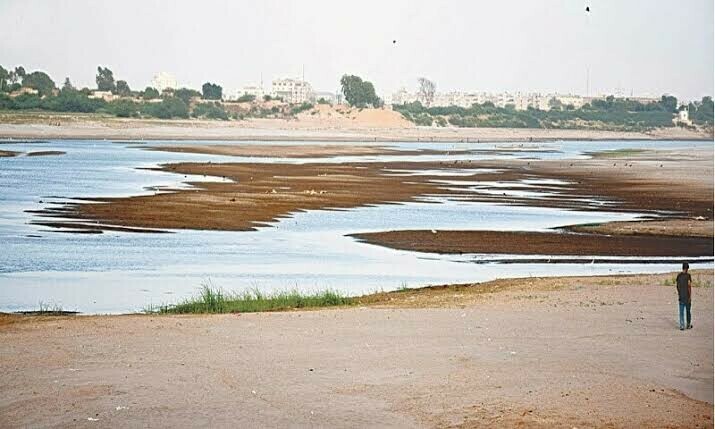
[ad_1]

ISLAMABAD: In a major policy change, Balochistan has joined Sindh — instead of opposing it — to push for greater water share from Punjab through implementation of a provincial water distribution mechanism held in abeyance for more than two decades.
At a meeting of the Indus River System Authority (Irsa) Advisory Committee (IAC) last week, Sindh irrigation secretary Zarif Khero reiterated the government of Sindh’s demand for distribution of provincial water shares under Para-2 of the Water Apportionment Accord of 1991, instead of 3-tier formula adopted by the water regulator purportedly to deal with water shortages.
Mr Khero then insisted that the water distribution formula should be immediately shifted from 3-tier formula to Para-2 and the decision should be made then and there and alleged that Irsa had for far too long denied Sindh of its water share promised in the 1991 water accord.
He said his province was being a given ‘lollipop’ for years that a decision on the subject would be taken by the Council of Common Interests (CCI) but the matter had been lingering for years and years.
Sindh reiterates demand for resource distribution under apportionment accord
Mr Khero said the dispute fell in the jurisdiction of Irsa itself and it had unnecessarily shifted its responsibility to another forum.
“The decision has to be taken by Irsa itself and it should shift water distribution to Para-2 today,” he was quoted as saying in the IAC meeting.
To the surprise of Irsa members from Punjab and Sindh, Irsa Chairman Abdul Hameed Mengal who is also Balochistan member, supported Sindh’s position and said his province had decided to change its stance and would now stand by Sindh because it was in the common interest of both Sindh and Balochistan.
Mr Mengal said application of Para-2 entailed greater water share to Sindh that would in turn help better water availability to Balochistan.
For years, Balochistan has been complaining against Sindh for not allowing its water share to flow down its canals.
Balochistan had also been demanding compensation from Sindh for the water quantities it consumed instead of allowing it to reach Balochistan’s agricultural lands.
Punjab and federal members, however, blocked the move on technical grounds. They reiterated that the matter was pending with CCI and the position of member Khyber Pakhtunkhwa was also vacant. Therefore, Irsa being a sub-ordinate forum, could not even attempt to call back its case from CCI and take a decision on its own, particularly when the position of KP member was vacant and even secretary of irrigation of KP was also not attending Irsa meetings.
They insisted that even if the CCI referred back the case, Irsa could not even discuss, let alone take a decision unless the five-member Irsa was complete.
The discussion even turned sour when member of Punjab suggested that such dispute would not even arise if Sindh controls exceptionally higher system losses, sometimes going beyond 30pc. Member of Sindh retorted that a similar improvement in Punjab could be of even greater help and worth taking.
The 1991 water accord works well in rare cases of sufficient water availability – 114-million-acre feet (MAF) a year – assumed at the time of accord negotiations. Because of shortages going beyond 10pc which has become a routine, Irsa is using a de facto 3-tier formula for distribution of water shares among the provinces to the dissatisfaction of Sindh which had been pushing for application of Para-2 of the accord.
Irsa had taken the stance for a few years now that it could not change distribution practices currently in place i.e. 3-tier formula for water distribution among the provinces to absorb water shortages. Under the 1991 water accord, the apportionment of water was made under Para 2 of the agreement that fixed provincial shares.
However, because of the shortages this Para is not currently in application for more than a decade as Irsa with the involvement of federal and provincial governments put in place in 2002 a cascading water distribution share mechanism among provinces in the light of shortages. The 3-tier formula is now a combination of Para-2, Para-14(a) and historical uses of 1977-1982.
Para-14(b) required that “ten daily uses would be adjusted pro-rata to correspond to the indicated seasonal allocations of the different canal systems and would form the basis for sharing shortages and surpluses on all Pakistan basis”.
Under the 3-tier formula, however, the small provinces namely Balochistan and Khyber Pakhtunkhwa are exempt from application of shortage which is then shared by Sindh and Punjab. Sindh, however, faces the larger shortage because of the 3-tier formula.
Sindh has been arguing that while putting in place 3-tier formula Irsa had surpassed its mandate envisaged under the accord and started distribution contrary to the accord and devised its own formulas despite Sindh’s objection through a meeting of the provincial committee of ministers.
With majority vote, Irsa has continued to hold that as the water distribution issue (under Para-14, Para-2 or historic uses) was already under active consideration of the Council of Common Interests (CCI), no further discussion on the issue could take place until the final decision was reached by the CCI which had been sitting on the matter for many years.
According to Irsa, the 3-tier formula for water distribution was systematic and dealt with different flow conditions on a sliding scale and it was beyond the mandate of the Irsa advisory committee to change 10-daily system uses as set in the Para-14/b of the accord.
Published in Dawn, October 7th, 2024
[ad_2]
Source link






